Recent Posts
Construction
9/29/2021 (Permalink)
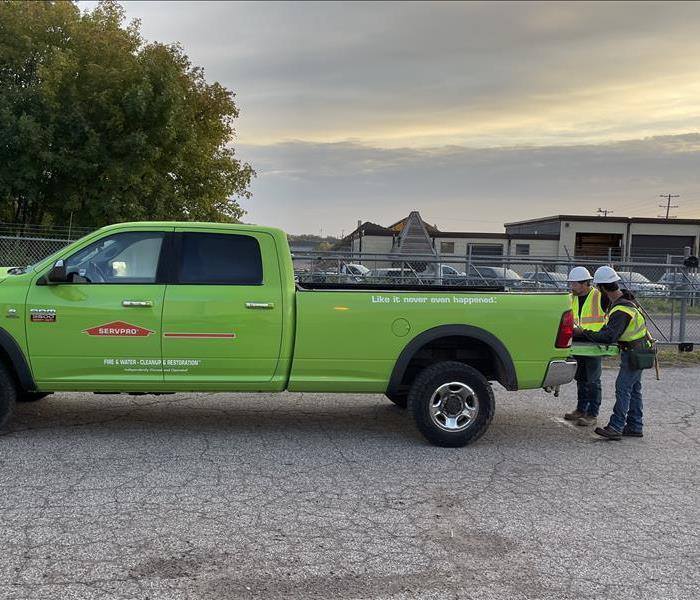 WE MAKE IT HAPPEN!
WE MAKE IT HAPPEN!
SERVPRO of The Twin Ports Duluth MN We specialize in new construction, interior remodels, exterior remodels and building maintenance Emergency Services Pre-construction Design and Estimating Design/Build Construction Management Office Build-outs, Renovation and Expansion
Our team of experienced professionals
8/20/2021 (Permalink)
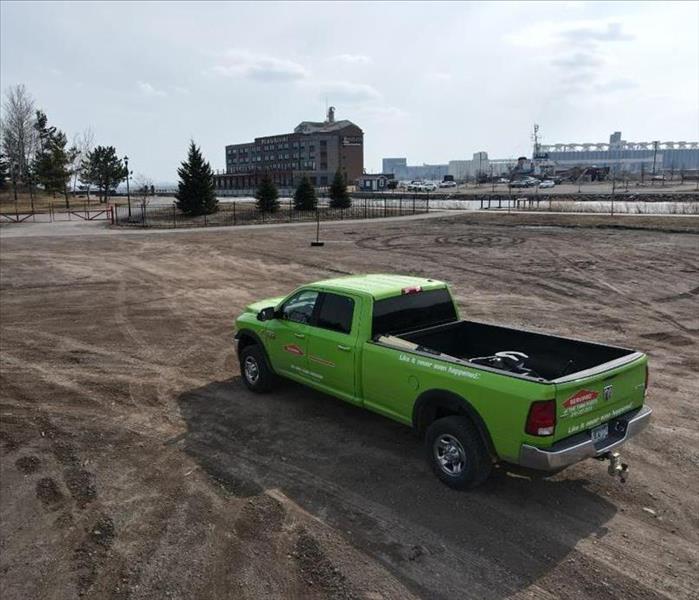 Our team of experienced professionals
Our team of experienced professionals
Whether you need emergency flood damage restoration or top-to-bottom home cleaning, you can trust SERVPRO franchise professionals to make your house feel like home again. They have the training, experience, and equipment to quickly get your home looking its best.
Storm and flood damage can be devastating. Immediate action is needed, and you need the company with storm damage experience. SERVPRO Franchise Professionals have the expertise and the resources to handle any size disaster and can respond immediately to storm and flooding conditions.
SERVPRO of The Twin Ports Duluth MN
We specialize in new construction, interior remodels, exterior remodels and building maintenance Emergency Services Pre-construction Design and Estimating Design/Build Construction Management Office Build-outs, Renovation and Expansion
WE MAKE IT HAPPEN!
Spirt Valley Days Parade
8/16/2021 (Permalink)
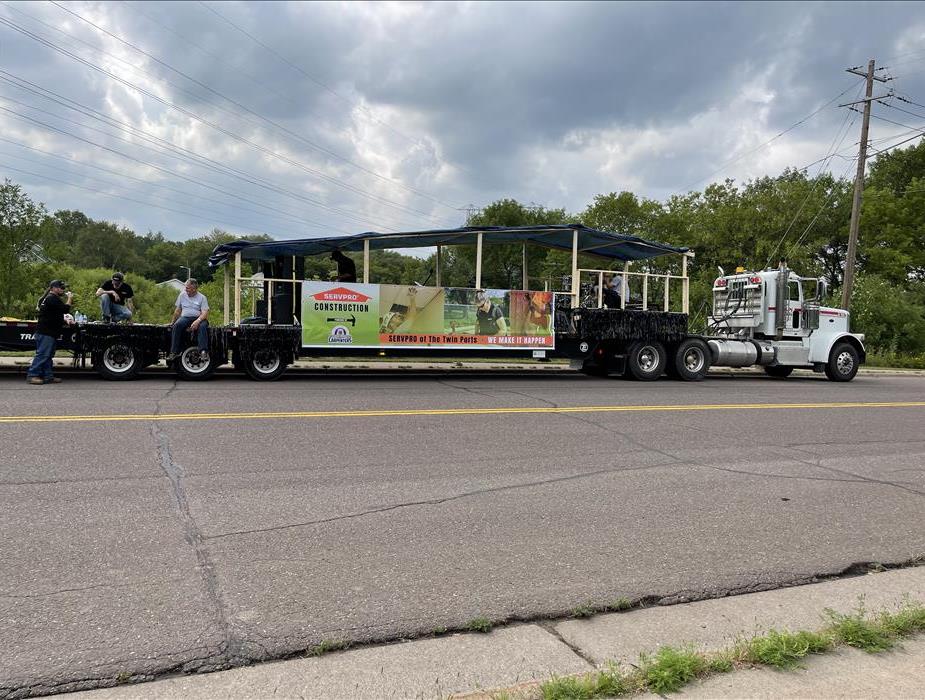 Spirt Valley Days Parade
Spirt Valley Days Parade
SERVPRO of the Twin Ports Duluth MN Our construction and remodeling division getting ready for Spirit Valley Days Parade, West Duluth’s signature summer parade.
SERVPRO of The Twin Ports Duluth MN We specialize in new construction, interior remodels, exterior remodels and building maintenance Emergency Services Pre-construction Design and Estimating Design/Build Construction Management Office Build-outs, Renovation and Expansion.
We specialize in new construction, interior remodels, exterior remodels and building maintenance for retail, offices, financial institutions, healthcare facilities, educational facilities, government properties, warehouses and shipping facilities. Examples of work completed at these facilities include creating innovative offices, repairing airplane hangers, installing modular buildings, creating public greenways and parks, upgrading interior and exterior for ADA compliance, and erecting metal building/canopies. Our in-house work includes but is not limited to sidewalks, concrete pads and ramps, framing, drywall, acoustical ceilings, wood trim work, doors, frames, locks, and pallet racking systems.
Construction Service
5/18/2021 (Permalink)
 Construction
Construction
SERVPRO of The Twin Ports Duluth MN we put our client’s needs first to deliver a project on-time at a fair price. We are a construction and remodeling experienced water, fire, mold or biohazard damage. Our 24-hour emergency service is dedicated to responding immediately to your commercial or residential needs. SERVPRO is focused on building relationships through high-quality products, expert services, and the best customer service in the industry. We want to take your renovation experience to the next level by offering you the collective expertise of all that SERVPRO has to offer!
Construction
5/17/2021 (Permalink)
 Construction
Construction
SERVPRO of the Twin Ports Duluth, MN We specialize in new construction, interior remodels, exterior remodels and building maintenance Emergency Services Pre-construction Design and Estimating Design/Build Construction Management Office Build-outs, Renovation and Expansion
How to Maintain Operations During a Pandemic Part 1
12/9/2020 (Permalink)
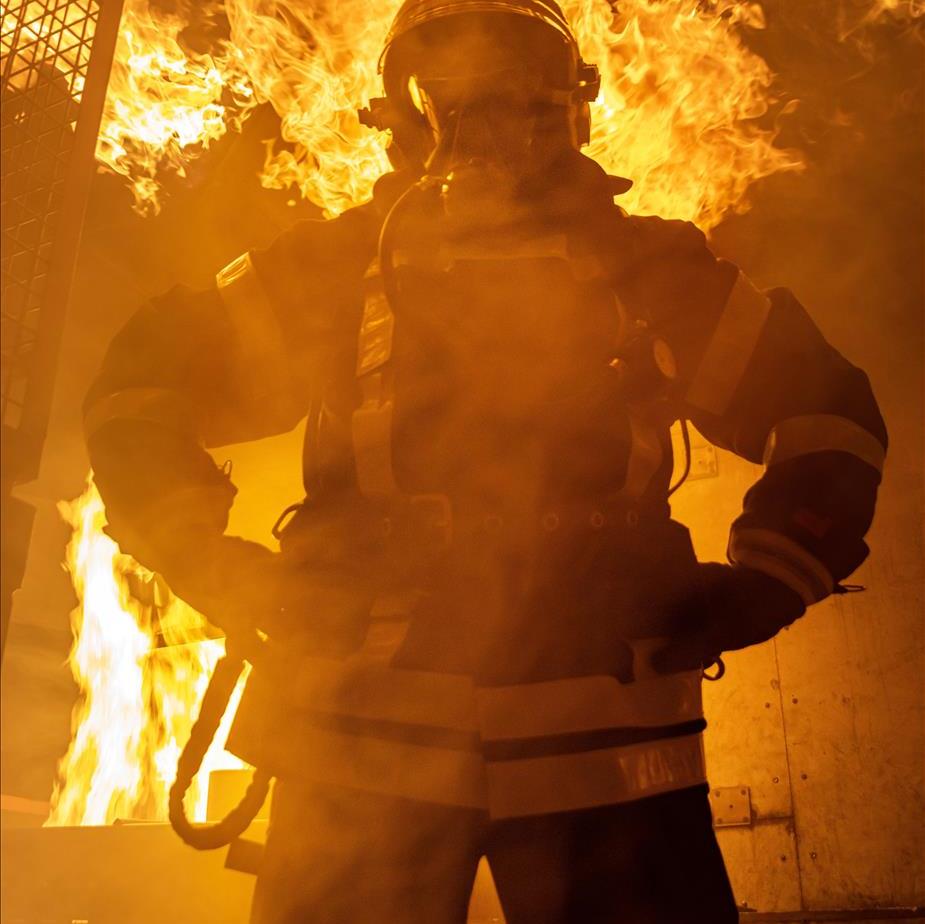 How to Maintain Operations During a Pandemic Part 1
How to Maintain Operations During a Pandemic Part 1
As an employer, you have an important role in protecting employee health and safety, and limiting the impact of an influenza pandemic.
It is important to work with community planners to integrate your pandemic plan into local and state planning, particularly if your operations are part of the nation's critical infrastructure or key resources. Integration with local community planners will allow you to access resources and information promptly to maintain operations and keep your employees safe.
Develop a Disaster Plan
Develop a disaster plan that includes pandemic preparedness (See here) and review it and conduct drills regularly.
- Be aware of and review federal, state and local health department pandemic influenza plans. Incorporate appropriate actions from these plans into workplace disaster plans.
- Prepare and plan for operations with a reduced workforce.
- Work with your suppliers to ensure that you can continue to operate and provide services.
- Develop a sick leave policy that does not penalize sick employees, thereby encouraging employees who have influenza-related symptoms (e.g., fever, headache, cough, sore throat, runny or stuffy nose, muscle aches, or upset stomach) to stay home so that they do not infect other employees. Recognize that employees with ill family members may need to stay home to care for them.
- Identify possible exposure and health risks to your employees. Are employees potentially in contact with people with influenza such as in a hospital or clinic? Are your employees expected to have a lot of contact with the general public?
- Minimize exposure to fellow employees or the public. For example, will more of your employees work from home? This may require enhancement of technology and communications equipment.
- Identify business-essential positions and people required to sustain business-necessary functions and operations. Prepare to cross-train or develop ways to function in the absence of these positions. It is recommended that employers train three or more employees to be able to sustain business-necessary functions and operations, and communicate the expectation for available employees to perform these functions if needed during a pandemic.
- Plan for downsizing services but also anticipate any scenario which may require a surge in your services.
- Recognize that, in the course of normal daily life, all employees will have non-occupational risk factors at home and in community settings that should be reduced to the extent possible. Some employees will also have individual risk factors that should be considered by employers as they plan how the organization will respond to a potential pandemic (e.g., immuno-compromised individuals and pregnant women).
- Stockpile items such as soap, tissue, hand sanitizer, cleaning supplies and recommended personal protective equipment. When stockpiling items, be aware of each product's shelf life and storage conditions (e.g., avoid areas that are damp or have temperature extremes) and incorporate product rotation (e.g., consume oldest supplies first) into your stockpile management program.
Make sure that your disaster plan protects and supports your employees, customers and the general public. Be aware of your employees' concerns about pay, leave, safety and health. Informed employees who feel safe at work are less likely to be absent.
- Develop policies and practices that distance employees from each other, customers and the general public. Consider practices to minimize face-to-face contact between employees such as e-mail, websites and teleconferences. Policies and practices that allow employees to work from home or to stagger their work shifts may be important as absenteeism rises.
- Organize and identify a central team of people or focal point to serve as a communication source so that your employees and customers can have accurate information during the crisis.
- Work with your employees and their union(s) to address leave, pay, transportation, travel, childcare, absence and other human resource issues.
- Provide your employees and customers in your workplace with easy access to infection control supplies, such as soap, hand sanitizers, personal protective equipment (such as gloves or surgical masks), tissues, and office cleaning supplies.
- Provide training, education and informational material about business-essential job functions and employee health and safety, including proper hygiene practices and the use of any personal protective equipment to be used in the workplace. Be sure that informational material is available in a usable format for individuals with sensory disabilities and/or limited English proficiency. Encourage employees to take care of their health by eating right, getting plenty of rest and getting a seasonal flu vaccination.
- Work with your insurance companies, and state and local health agencies to provide information to employees and customers about medical care in the event of a pandemic.
- Assist employees in managing additional stressors related to the pandemic. These are likely to include distress related to personal or family illness, life disruption, grief related to loss of family, friends or coworkers, loss of routine support systems, and similar challenges. Assuring timely and accurate communication will also be important throughout the duration of the pandemic in decreasing fear or worry. Employers should provide opportunities for support, counseling, and mental health assessment and referral should these be necessary. If present, Employee Assistance Programs can offer training and provide resources and other guidance on mental health and resiliency before and during a pandemic.
SERVPRO of the Twin Ports provides disinfection services for companies interested in minimizing the effects of the COVID crisis in the region. WIth the use of special sprayers and proprietary products, we can minimize the downtime of any affected organization by strategically treating materials, equipment, and fixtures with EPA registered disinfectants. Our special electrostatic sprayer systems enable us to treat surfaces and keep them wet for the required 10-15 minutes dwell time for disinfectants without oversaturating. No damage to computer equipment, phone systems, or paper files!
Call 218-727-2575 today to get a free site survey and estimate. Be ready in case an infectious person shows up at your facility! Now, some more breaking news about COVID-19 in our local market.
How To Maintain Operations During A Pandemic Part 2
12/9/2020 (Permalink)
 How To Protect Employees and Customers
How To Protect Employees and Customers
Educate and train employees in proper hand hygiene, cough etiquette and social distancing techniques.
Understand and develop work practice and engineering controls that could provide additional protection to your employees and customers, such as: drive-through service windows, clear plastic sneeze barriers, ventilation, and the proper selection, use and disposal of personal protective equipment.
These are not comprehensive recommendations. The most important part of pandemic planning is to work with your employees, local and state agencies and other employers to develop cooperative pandemic plans to maintain your operations and keep your employees and the public safe. Share what you know, be open to ideas from your employees, then identify and share effective health practices with other employers in your community and with your local chamber of commerce.
How Organizations Can Protect Their Employees
For most employers, protecting their employees will depend on emphasizing proper hygiene (disinfecting hands and surfaces) and practicing social distancing. Social distancing means reducing the frequency, proximity, and duration of contact between people (both employees and customers) to reduce the chances of spreading pandemic influenza from person-to-person. All employers should implement good hygiene and infection control practices.
Occupational safety and health professionals use a framework called the "hierarchy of controls" to select ways of dealing with workplace hazards. The hierarchy of controls prioritizes intervention strategies based on the premise that the best way to control a hazard is to systematically remove it from the workplace, rather than relying on employees to reduce their exposure. In the setting of a pandemic, this hierarchy should be used in concert with current public health recommendations.
The types of measures that may be used to protect yourself, your employees, and your customers (listed from most effective to least effective) are: engineering controls, administrative controls, work practices, and personal protective equipment (PPE). Most employers will use a combination of control methods. There are advantages and disadvantages to each type of control measure when considering the ease of implementation, effectiveness, and cost.
For example, hygiene and social distancing can be implemented relatively easily and with little expense, but this control method requires employees to modify and maintain their behavior, which may be difficult to sustain. On the other hand, installing clear plastic barriers or a drive-through window will be more expensive and take a longer time to implement, although in the long run may be more effective at preventing transmission during a pandemic. Employers must evaluate their particular workplace to develop a plan for protecting their employees that may combine both immediate actions as well as longer term solutions.
Work Practice and Engineering Controls -
Historically, infection control professionals have relied on personal protective equipment (for example, surgical masks and gloves) to serve as a physical barrier in order to prevent the transmission of an infectious disease from one person to another. This reflects the fact that close interactions with infectious patients is an unavoidable part of many healthcare occupations. The principles of industrial hygiene demonstrate that work practice controls and engineering controls can also serve as barriers to transmission and are less reliant on employee behavior to provide protection.
Work practice controls are procedures for safe and proper work that are used to reduce the duration, frequency or intensity of exposure to a hazard. When defining safe work practice controls, it is a good idea to ask your employees for their suggestions, since they have firsthand experience with the tasks. These controls should be understood and followed by managers, supervisors and employees. When work practice controls are insufficient to protect employees, some employers may also need engineering controls.
Engineering controls involve making changes to the work environment to reduce work-related hazards. These types of controls are preferred over all others because they make permanent changes that reduce exposure to hazards and do not rely on employee or customer behavior. By reducing a hazard in the workplace, engineering controls can be the most cost-effective solutions for employers to implement.
During a pandemic, engineering controls may be effective in reducing exposure to some sources of pandemic influenza and not others. For example, installing sneeze guards between customers and employees would provide a barrier to transmission. The use of barrier protections, such as sneeze guards, is common practice for both infection control and industrial hygiene. However, while the installation of sneeze guards may reduce or prevent transmission between customers and employees, transmission may still occur between coworkers. Therefore, administrative controls and public health measures should be implemented along with engineering controls.
SERVPRO of the Twin Ports is providing disinfection services for companies interested in minimizing the effects of the COVID crisis in the region. WIth the use of special sprayers and proprietary products, we can minimize the downtime of any affected organization by strategically treating materials, equipment, and fixtures with EPA registered disinfectants. Our special electrostatic sprayer systems enable us to treat surfaces and keep them wet for the required 10-15 minutes dwell time for disinfectants without oversaturating. No damage to computer equipment, phone systems, or paper files!
An employee has tested positive for COVID-19 What should you do?
12/9/2020 (Permalink)
You should send home the infected employee for a 14-day period of time to ensure the infection does not further spread.
Before the employee departs, ask them to identify all individuals who worked in close proximity, for extended periods of time that exceeded incidental contact such as shift briefings, with them in the previous 14 days to ensure you have a full list of those who could be at high risk for occupational exposure. Any employees who worked closely with the infected employee with more than incidental contact (riding in same vehicle, working on a project together, etc.) should be sent home for a minimum period of 5 days so they can self-monitor symptoms and get tested if the need arises.
Call SERVPRO about our Office Cleaning Guidelines for deep cleaning protocols of your affected work-spaces. If you work in a shared office building or area, you should inform your customer and/or building management right away so they can take whatever precautions they deem necessary.
One of our employees has a suspected but unconfirmed case of COVID-19. What should we do?
Take the same precautions as noted above. Treat the situation as if the suspected case is a confirmed case for purposes of sending home potentially infected employees. Communicate with your affected workers to let them know that the employee has not tested positive for the virus but has been exhibiting symptoms that lead you to believe a positive diagnosis is possible.
One of our employees self-reported that they came into contact with someone who had a presumptive positive case of COVID-19. What should we do?
Take the same precautions as noted above. Treat the situation as if the suspected case is a confirmed case for purposes of sending home potentially infected employees. Communicate with your affected workers to let them know that the employee is asymptomatic for the virus but you are acting out of an abundance of caution.
One of our employees has been exposed to the virus but only found out after they had interacted with clients and customers. What should we do?
Take the same precautions as noted above with respect to coworkers, treating the situation as if the exposed employee has a confirmed case of COVID-19 and sending home potentially infected employees that he came into contact with. As for third parties, you should communicate with customers and vendors that came into close contact with the employee to let them know about.
Mistakes You're Making With Face Masks
12/9/2020 (Permalink)
“The Escape Hatch”
When there’s a hole in the mask - Leaving a hole in the mask eliminates the protection that a mask offers. It allows particles to escape and enter the nose and mouth. Guidelines say you can remove your masks once you sit at a table at a restaurant, so there is no need to wear a mask with a hole in it at any time.
“The Earring”
When the mask hangs off one ear - The earring fails to cover the mouth or the nose—the two areas on your face where COVID-19 droplets can enter your body. Wearing a mask and hanging it off one ear is very ineffective. A person wearing a mask like this puts themselves and others at risk.
“The Sniffer”
When the mask leaves the nose exposed - Leaving the nose exposed allows the mask-wearer to spread potentially contagious particles when sneezing, coughing, or talking. They are also increasing their own risk of infection by not covering their nose.
“The Stache”
When you wear your mask like a mustache - Similar to other incorrect mask-wearing techniques, “the stache” exposes the nose and mouth, rendering the mask useless. Be sure to properly cover up your face with a mask or face covering to provide a safeguard against infection or infecting others with COVID-19.
“The Nose Plug”
When the mask leaves the mouth exposed - The inverse of “the sniffer,” this technique is just as ineffective. If the nose and mouth are not both fully covered, the mask is not protecting you or others to its full potential.
“The Neckbeard”
When the mask is resting under the chin - Sometimes in public, people periodically lower the mask to their chin. This renders the mask useless and reduces all of its benefits. The mask should not be moved off of the nose or mouth for any time when unable to social distance.
“The Mullet”
When the mask is behind the head like a backward baseball cap - Just because a mask is visible on someone’s face, does not mean they’re following protocol and staying protected. A mask worn behind the head is 100% ineffective in protecting you and those around you.
A mask should completely cover the nose and mouth and should be tight around the ears or head for a snug fit. However, wearing a face mask or face covering incorrectly can do more harm than good.
Icicles Means You Have Ice Dams!
2/11/2020 (Permalink)
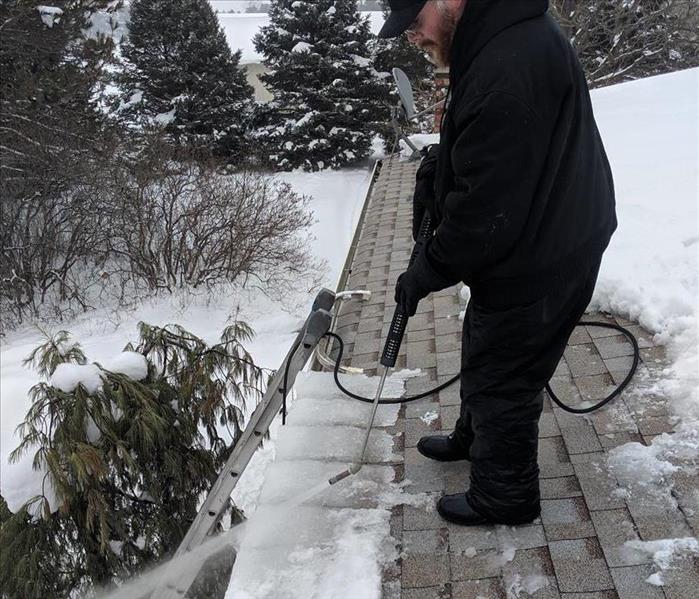 Removing ice dams and cleaning up the associated mess inside is what SERVPRO is all about!
Removing ice dams and cleaning up the associated mess inside is what SERVPRO is all about!
If you have Icicles, you have ice dams!
Q: Why do ice dams form?
A: When your roof vents are overrun with snow, the vents do not allow warm air from the attic to escape. The heat builds up in your attic. Since the heat has nowhere to go, your roof deck heats up and melts the snow pack at the roof surface.
The melted snow runs down your (warm) roof and turns to ice on the unheated eaves. This ice pack builds and builds until it backs up under your shingles...once it gets backed up past the place the exterior walls meet the roof, the warm roof deck melts the ice from underneath and the result is "loose" water that penetrates the roof deck and works its way down the roof line (inside the attic) to your exterior walls.
Take a look outside. If you see ice working its way between siding and window joints, you already have water in your wall cavities! Your insulation is wet, the framing is wet, and the wall sheathing is wet.
Sitting in your walls behind the vapor barrier, this moisture cycles between freezing, evaporating, and condensing, a situation that is ideal for mold growth! If left unchecked, you can have a widespread mold problem and not know it.
Q: So, what to do about ice dams?
(1) Make sure your roof vents are cleared regularly. Just one big snow fall can clog them. Especially ridge vents.
(2) Shovel the roof to make sure the eaves are cleared 6-8' back from the edge.
(3) If you do get ice dams, call SERVPRO to have them removed with gentle steam. Do NOT try to break them up with a hammer or use salt. This can cause damage to your roofing materials.
(4) If you see water dripping through a ceiling or wall, the good news is interior water damage from ice dams is generally covered by insurance. Check with your agent to verify coverage and file a claim. Call SERVPRO of the Twin Ports (218) 727-2575 immediately to remove the ice dams from the roof then address affected walls and insulation, get the interior sheathing and framing dry, and replace the interior insulation, vapor barrier, and wall materials, repaint, re-trim etc.
SERVPRO is here to make your ice dam event "Like it never even happened."
Sometimes roof repairs or insulation removal in the attic may be necessary to correct water intrusion problems.
If you have any of these issues right now, please send us photos and give us a call for a free immediate consultation by phone.
email: k_buck@SERVPROtwinports.com.
Phone: (218) 464-8315
Ice dams and the damage they cause can be a difficult challenge to solve, but our crews at SERVPRO of the Twin Ports are standing by ready to help!





 24/7 Emergency Service
24/7 Emergency Service





